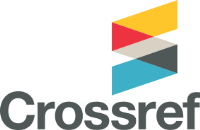IMPLEMENTING WILLIAMS AND SHELLENBERGER’S PYRAMID OF LEARNING IN THE EDUCATIONAL SYSTEM: A NEUROPEDAGOGICAL APPROACH
DOI:
https://doi.org/10.32782/2787-5137-2024-3-9Keywords:
neuropedagogy, sensory integration, Williams and Shellenberger’s Pyramid of Learning, neuropsychology, teachers training.Abstract
The purpose of this article is the analysis of theoretical and methodological aspects and perspectives of integrating Williams and Shellenberger’s Pyramid of Learning into the neuropedagogical approach as a model for supporting sensory-cognitive development. It also aims to investigate strategies for preparing educators to apply neuropedagogical methods effectively. By considering European efforts, particularly through initiatives like the Erasmus+ program, this study explores ways to advance the training and resources available to educators. The research methodology is based on the principles of the neuropedagogical approach and analysis of Williams and Shellenberger’s Pyramid of Learning theory to understand the implications of sensory-cognitive development to understand the implications of sensory-cognitive development within the educational system. Additionally, the study evaluates current training practices for educators in European, Ukrainian and Saudi Arabian contexts and examines best experience for embedding multisensory strategies in curricula. The scientific novelty of the study lies in its comprehensive analysis of Williams and Shellenberger’s Pyramid of Learning as a sensory-cognitive framework within the field of neuropedagogy. By exploring this model’s application in curricula, the article offers new insights into how structured sensory-based learning environments can enhance student engagement and academic outcomes. This research seeks to bridge theoretical insights with practical applications within diverse educational settings. Furthermore, it emphasizes the role of European initiatives in advancing neuropedagogical practices and the importance of aligning Ukrainian and Saudi Arabian training programs with these standards. Conclusions. The study supposes that implementation of Williams and Shellenberger’s Pyramid of Learning within educational systems can address significant deficiencies in current teaching methods by fostering a neuropedagogical approach that supports various (neurotypical and neurodivergent) learners and their needs. However, the effective use of these methods remains limited due to insufficient teacher training, especially in non-European contexts. The findings suggest that future research should focus on validating sensory-based approaches and adapting Williams and Shellenberger’s Pyramid of Learning to suit diverse educational settings, ensuring compatibility with both European, Ukrainian and Saudi Arabian standards. Equipping educators with neuropedagogical competencies through structured training programs will be essential to achieving neurodevelopmentally informed educational environments.
References
Kurniawati N., Mustaji, Setyowati S. Implementation of neuroscience learning to develop early childhood’s cognitive. In 2nd International Conference on Education Innovation (ICEI 2018). Advances in Social Science, Education and Humanities Research. 2018. Volume 212. Atlantis Press. URL: https://www.atlantis-press.com/article/55907454.pdf.
European School Education Platform. Neuropedagogy in Action: Innovative Strategies for Inclusive Education and Engaging Minds [Електронний ресурс]. European School Education Platform. URL:
education-and-engaging-minds (дата звернення: 10.12.2024).
Piddubna O., Maksymchuk A., Lytvychenko D., Revutska O., Moskalenko M., Sopina O. Implementing neuropedagogical innovation in schools: From theory to practice. BRAIN. Broad Research in Artificial Intelligence and Neuroscience. 2023. Vol. 14, No. 2. P. 37–58. DOI: https://doi.org/10.18662/brain/14.2/443.
Tokuhama-Espinosa T. The scientifically substantiated art of teaching: A study in the development of standards in the new academic field of neuroeducation (mind, brain, and education science): дис. … д-ра філософії. Capella University. 2008. URL: https://www.researchgate.net/publication/36710537 (дата звернення: 9.12.2024).
Tokuhama-Espinosa T. Why mind, brain, and education science is the “new” brain-based education. New Horizons in Education. 2011.
Szécsi T., Varga L., Mak V. Current trends, dilemmas, and future directions in neuropedagogy in the field of early childhood. Training and Practice. 2018. 16 (3–4). Р. 59–72. URL: https://journal.uni-mate.hu/index.php/trainingandpractice/article/view/4295/4609 (дата звернення: 9.12.2024).
Nurmakhanova D.E., Rakhmetova A.K., Kassymbekova D.A., Meiirova G., Rakhimzhanova G.M. Neuropedagogy for improving the educational process in universities. Journal of Intellectual Disability – Diagnosis and Treatment. 2021. 9 (3). Р. 290–297. https://doi.org/10.6000/2292-2598.2021.09.03.8.
Williams M.S., Shellenberger S. How does your engine run? Leader’s guide to the alert program for self regulation. Albuquerque. NM: TherapyWorks. 1996.
Goddard Blythe S. Assessing Neuromotor Readiness for Learning: The INPP Developmental Screening Test and School Intervention Programme. Wiley-Blackwell. 2012.
Shevchenko Y., Dubiaha S., Kovalova O., Varina H., Svyrydenko H. Neuropsychological peculiarities of cognitive functions of speech-impaired junior pupils. Conhecimento & Diversidade. Niterуi. Vol. 15. No. 40. P. 322–339. DOI: https://doi.org/10.18316/rcd.v15i40.11252.
Navrotska Inna. Neuropsychological problems of Ukrainian children causes by the war. Education and science of today: intersectoral issues and development of sciences. Cambridge, United Kingdom. 2024. P. 415–417. DOI: 10.36074/logos-18.10.2024.095.
Amran M.S., Rahman S., Surat S., Bakar A.Y.A. Connecting Neuroscience and Education: Insight from Neuroscience Finding for Better Instructional Learning. Journal for the Education of Gifted Young Scientists. 2019. 7 (2). P. 341–352. URL: https://dergipark.org.tr/en/download/article-file/745665 (дата звернення: 9.12.2024).
Bowers J.S. The Practical and Principled Problems with Educational Neuroscience. Psychological Review. 2016. 123 (5). P. 600–612.
Ayres A.J. Sensory Integration and the Child. Western Psychological Services. 1979.
UNICEF. The state of the global education crisis: A path to recovery. 2021. URL: https://www.unicef.org/reports/state-global-education-crisis (дата звернення: 9.12.2024).
Education Cannot Wait. Number of crisis-impacted children in need of education support rises to 224 million. 2022. URL: https://www.educationcannotwait.org/news-stories/press-releases/number-crisisimpacted-children-in-need-education-support-rises (дата звернення: 9.12.2024).
UNICEF. War has hampered education for 5.3 million children in Ukraine, warns UNICEF. 2023, 24 січня. URL: https://www.unicef.org/ukraine/en/press-releases/war-has-hampered-education (дата звернення: 9.12.2024).
Alsamiri Y.A. Enhancing elementary school teachers’ competence in recognizing and supporting gifted students with learning disabilities in Saudi Arabia. Frontiers in Education. 2023. https://doi.org/10.3389/feduc.2023.1363175







